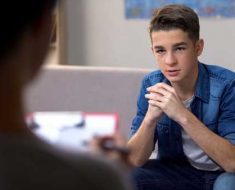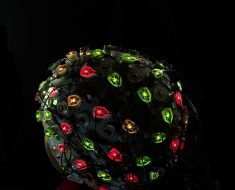Children who create imaginary parallel worlds, alone or with friends, are more found more commonly than previously believed, according to new research.
In a project designed to probe the dynamics of such behavior among children 8-12 years old, researchers found that about 17 percent of them, in each of two separate studies, described imaginary worlds with often deep complexities. Unlike earlier studies, the researchers focused on children in the age group most-frequently associated with this little-explored childhood phenomena.
The creation of such paracosms, as the imaginary worlds were first labeled in a 1976 study, is nothing to worry about, said the project’s lead author Marjorie Taylor, a professor emeritus of psychology at the University of Oregon.
“It’s a positive thing associated with creativity and storytelling, and it’s not particularly rare,” said Taylor, who has been studying children’s imaginary friends and paracosms for some 25 years. “These are kids who are coming up with very complex stories that they really enjoy and that many will share with others.”
The five-member research team detailed the findings in a paper now online ahead of print in the journal Child Development.
Early research on paracosms drew from adult memories about their childhood. In the 1992 book “The Development of Imagination: The Private Worlds of Childhood,” authors David Cohen and Stephen MacKeith identified 57 imaginary worlds but considered them to be rare.
Over time, Taylor questioned that assertion as she compiled growing evidence on the prevalence of children who devise imaginary friends and parallel worlds. Imaginary friends, Taylor said, emerge in young children, while paracosms come later.
The new study found a significant relationship between the creation of imaginary friends and the development of paracosms, but that didn’t always translate to the imaginary friends being part of later imaginary worlds.
In both studies, participating children—drawn from mostly educated and middle to upper socioeconomic status, primarily Euro-American, in a college town—were questioned in a non-leading way about their creations of an imaginary friend and paracosms. If their descriptions reached a defined level, the children were encouraged to provide more details about the parallel worlds they had created.
In the first study, which included 37 boys and 40 girls, the participants completed five creativity tasks tied to social skills, as well as assessments of their coping strategies and verbal comprehension. Sixteen boys and 20 girls reported having imaginary companions such as invisible friends or personified objects.
Among 77 children, 44 said they thought about an imaginary place and provided descriptions. Of those, fully developed paracosms were identified in the details from six of the boys and seven of the girls.
Neither verbal comprehension nor gender were found to be related to children who reported having imaginary friends and paracosms.
While these parallel worlds varied widely in content, they all included details about an environment (forests, lakes, caves, etc.), the inhabitants (bandits, goblins, animals, etc.) and mystical components, such as a fountain that sprayed honey.
The second, more complex study sought to replicate the first but also dig deeper. It included two measures of inhibitory control, one of working memory and a social creativity component that avoided the role of fantasy.
In this second study, paracosms were identified in 16 of the 92 children—12 girls and four boys. Imaginary companions were reported by 51 participants. Most of those who had developed parallel worlds also reported having had imaginary friends.
Children who had developed clear paracosms did not differ from other children in verbal comprehension or working memory, but they had more difficulty with the inhibitory control tasks, suggesting a link between creativity and lower inhibition. As in Study 1, children with paracosms were able to produce more creative endings to their stories than those who did not report paracosms.
“We thought paracosms would a private thing,” Taylor said. “Surprisingly, that was not always the case. It can be a very social activity. Often, we found that many kids would be involved together in building the parallel worlds.”
It may be, she speculated, that the most creative children are the ones who are able to shift between focusing their attention and a more open-ended mode of thinking.
Source: Read Full Article





